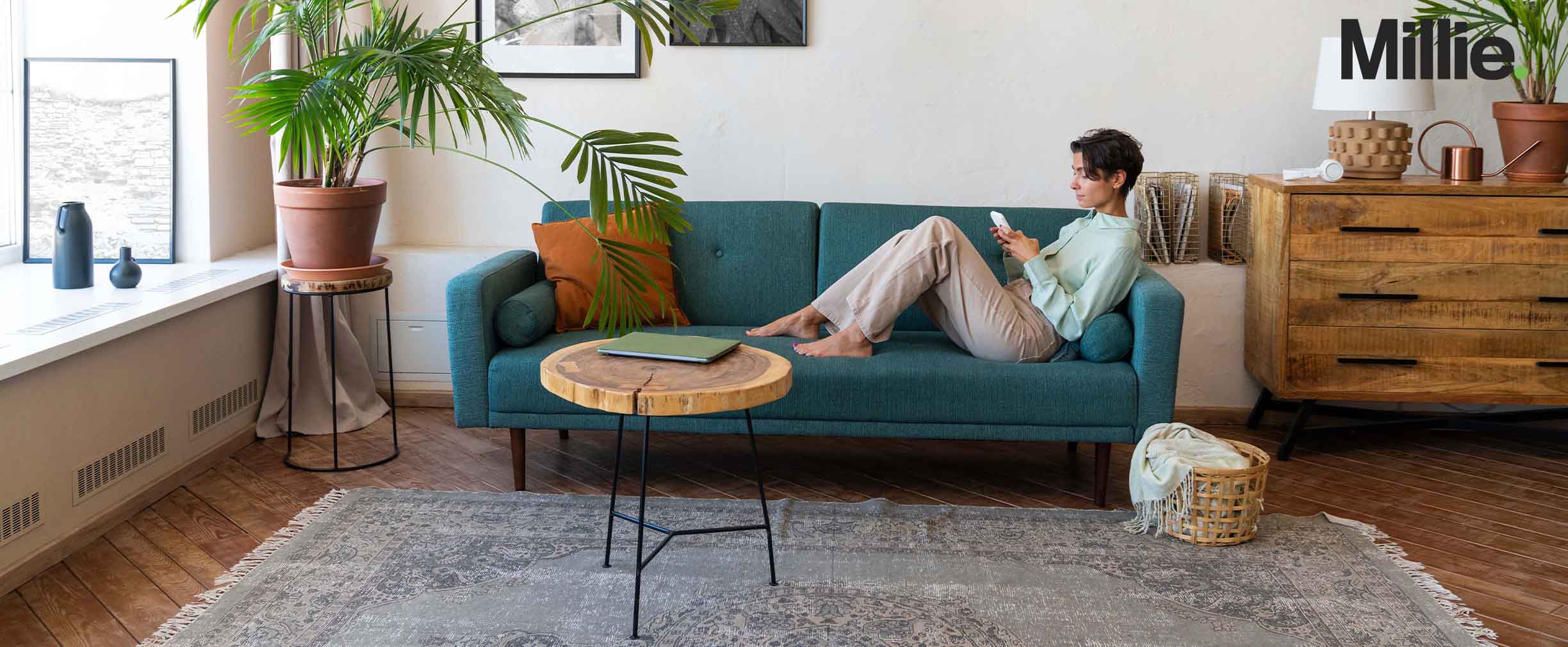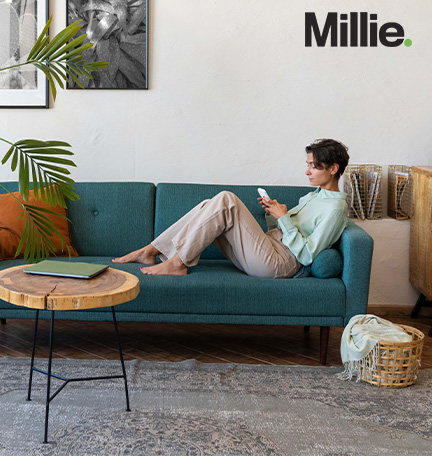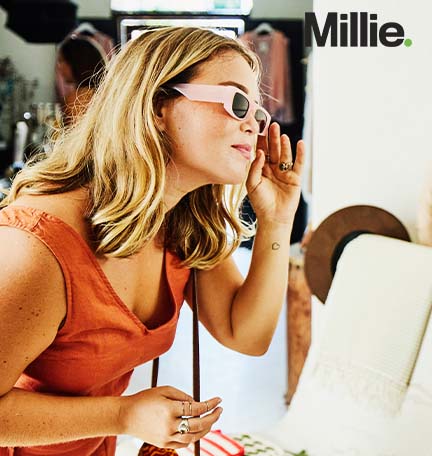It’s more than a pleasing design and style aesthetic. Minimalism can be a hands-off money-saving strategy too.
By Melanie Mannarino
Millie, a content program about women and money, is licensed from Dotdash Meredith, publisher of Real Simple, InStyle, Investopedia, The Balance and more.
Minimalism might conjure up gorgeously spare, neutral-toned interiors punctuated with plants. Or maybe you think of quietly chic outfits that work perfectly in any situation. But minimalist living is more than just a lifestyle choice: It can also be a financial strategy that promotes intentional spending and mindful consumption.
“Minimalist living is grounded in how a space makes us feel,” explains interior designer Sarah Barnard, who designs sustainable spaces that support mental, physical and emotional well-being. “It thrives on simplicity to create a restorative home environment that inspires mindfulness and calm.”
This mindfulness can extend to other areas of your life, including your finances.
Decluttering: The whole-life mindset
If you’re new to minimalism, a great place to start is by decluttering your space—whether a room, a closet or your entire home. “Decluttering can help create a calm interior,” says Barnard. “Custom storage solutions can be a great way to organize and stow away objects to help us focus.”
This satisfaction of streamlining your space can be applied to your finances too. You can start by organizing your financial paperwork and bills in one physical location. Then declutter your digital finances by using an online tracking tool or app that lets you view all your accounts and financial information in one place. You should also set up digital alerts for important deadlines and goals, such as the target date for when you’d like to have all your debt paid off. Having a visualization of a goal next to all your other financial information could be just the boost you need.
Plus, you might use this opportunity to automate your savings and bill paying, taking one more load off your mind as you embrace minimalism. Nothing says “peace of mind” more than scheduling your monthly payments and savings ahead of time.
You can apply a minimalist approach to investment as well. You may be funneling money into multiple brokerage accounts or investing apps, for example. Consolidating those into one account could help you save on investment fees and give you a clearer picture of what you own. Or you might have an old 401(k) from your last job that you can roll into your current work-sponsored retirement account, reducing the number of accounts to keep track of.
Minimizing your spending by owning fewer things
The minimalist life naturally lends itself to mindful spending. When you’re intentional about what belongings you bring into your life—be it clothes, accessories, furniture or art—there’s less chance of impulse buys and rash purchases. Indeed, the rationale that “it’s on sale” or “the one I have is getting old” is less tempting for the minimalist.
“Choosing quality over quantity is a fundamental element of minimalist living,” Barnard says. “Mindfully selecting objects of personal significance encourages us to focus on the essentials that bring us joy.” The items you do purchase are ones you’re likely to love for a long time—they won’t need replacing in a few months when they break or go out of style.
Storage cost: Not a problem
Items we own have an extra hidden cost: the money we spend to keep them in our homes or perhaps in a rented space. Minimalists will rarely tell you they need to find a bigger apartment or house because they have too much stuff. Nor are they likely to mention a monthly storage unit bill.
Expenses around upgrading to a larger living space, storage units for your belongings and even purchasing sheds or other outdoor solutions to hoard an abundance of things aren’t necessary with this minimalist mindset. It’s one less financial burden that will help you breathe easier.
Experiences become more affordable—and special
With fewer urges to purchase material possessions, you’ll have the financial freedom to pursue experiences that bring you joy—whether that’s saving up for vacations, attending live entertainment, taking up outdoor sports like hiking or cycling (as long as you don’t accumulate too much gear), or signing up for cooking classes and other hobbies with friends.
Personal values better align with spending
While the mindfulness inherent in a minimalist lifestyle means your regular spending will more accurately reflect your values, “considering the things we value the most can also help guide us in investment decisions,” Barnard says. You may choose to go down the environmental, social and governance (ESG) investing route, meaning you would only invest your money in companies that hold these values in high regard. Or maybe you only invest in sustainable companies or those that focus on diversity.
This mindfulness mindset may even come into play when investing in big purchases. You might prioritize sustainable, eco-friendly fuels or materials or choose to buy from local artisans to forge a personal connection and potentially get higher-quality items. It may cost you more upfront, but if you do your research, you can choose products that won’t need to be replaced for many years.
In fact, not spending can also align with your values, as purchasing fewer items reduces your impact on the environment—including the resources used to manufacture products, the carbon emissions required to bring them to market (and ultimately your doorstep) and the inevitable disposal of them once they’re no longer useful. “Less purchasing is related to less manufacturing and, ultimately, less waste,” Barnard says.
Melanie Mannarino is an editorial and brand strategist who spent the bulk of her career editing digital and print content for national media brands including Seventeen, Marie Claire, Real Simple, Cosmopolitan and Shape.
Three things to do
- Learn more about vacation savings accounts.
- Find out how to get your financial house in order.
- Get tips on how to discuss finances when you’re married.










